How to choose linoleum for the kitchen?
When selecting a coating, the following recommendations are taken into account:
- When choosing this product, its hygroscopicity plays an important role.
- The coating should have a minimum slip even when wet, be resistant to abrasion and stress.
- Using a thin linoleum sheet, in order to avoid defects and imperfections on the surface, it is required to carefully level the base.
- To decorate a small or narrow kitchen, it will not be appropriate to lay a variegated coating. Here it is better to use flooring in light shades with a glossy surface or a diagonal pattern.
- It is desirable that the linoleum color matches the headset.
- When choosing, you should pay attention to the marking, since the kitchen covering should have increased antiseptic characteristics.
The photo shows the interior of a small kitchen with light-colored linoleum on the floor.
Pros and cons of linoleum in the kitchen
Main advantages and disadvantages.
| pros | Minuses |
|---|---|
| It is quite firm, soft and elastic. | May have a temporary odor. |
| Easy to clean, has good water repellency and eliminates mold and mildew. | Fading and yellowing over time. |
| Antistatic and less dusty. | Does not withstand certain mechanical influences and aggressive detergents. |
| Some types, due to the rough or embossed surface, are non-slip. |
Types of linoleum for the floor
By thickness, susceptibility to abrasion and the presence of a protective layer, coatings are divided into three main classes:
- Commercial. It is made of polyvinyl chloride and most often has a single-layer structure without an additional substrate. The commercial type is hygienic, fireproof and has a strong protective layer that can significantly increase the strength and durability of the product.
- Semi-commercial. It is considered to be quite wear-resistant. It contains a felt and synthetic base, due to which this coating retains warmth in the room better.
- Domestic. Versatile, moisture resistant, elastic, easy to clean, has a wide range of colors and has a foam and felt base.
In the photo there is a blue linoleum of a semi-commercial type on the floor in the interior of the kitchen.
Recommendations for the choice of material
Natural ecological linoleum contains lime powder, cork conglomerate, linseed oil, resin and natural coloring pigments, which are applied to a jute and linen base.
Among the artificial ones, there are glyphthal, rubber, colloxylin types, as well as a hypoallergenic and safe PVC coating, which has high moisture resistance, strength, elasticity, resistance to mechanical stress and a huge number of colors and patterns.It can be multi-layer heterogeneous or one-layer homogeneous.
The photo shows the interior of the kitchen with a red PVC linoleum coating on the floor.
The main advantage of liquid bulk linoleum is a smooth and even surface without seams. This material is made from high quality processed polyurethane and epoxy resin.
How to choose the color of your kitchen linoleum?
Choosing a color scheme for kitchen coverings also requires a competent approach.
The black
It is a sign of respectability and undoubtedly turns into the main detail of the entire room. Black luxury flooring, especially when combined with light walls and high-quality lighting, will form a laconic and harmonious design.
In the photo, black dark linoleum in a Scandinavian-style kitchen.
White
It will give a feeling of lightness and purity, visually expanding the spatial boundaries and even more emphasizes the furniture items.
Brown
It has a stylish, solid and luxurious look and represents a classic solution for giving the interior a dignified and majestic look.
Green
Natural herbal green shade, will give the atmosphere a touch of freshness and become the most noticeable, bright and effective decorative design of the room.
In the photo, the floor in the kitchen, decorated with green linoleum.
Grey
Due to its neutrality, it is considered a fairly common color, which always looks very noble and stylish.
Yellow
It will charge the atmosphere of the kitchen with a positive and good mood, as well as compensate for the lack of natural light.
In the photo there is a kitchen combined with a dining room with a floor lined with matte yellow linoleum.
Beige
It will add personality, aristocracy, good taste to the atmosphere and endow the space with warm and positive energy. In addition, in case of yellowing, it will be less noticeable on a beige coating.
In the photo there is a light beige linoleum in the interior of a Provence style kitchen.
Linoleum design in the interior
Thanks to all kinds of design, you can choose the most suitable design, which ideally complements the overall interior picture.
Linoleum with a pattern for tiles
It is a fairly popular design solution that allows, at low cost, to obtain a coating with a high-quality imitation of the texture of tiles, depressions and tile joints.
Imitation laminate
Linoleum for laminate, parquet or board, has a very authentic appearance, is distinguished by a wealth of visual effects and a variety of color shades from light wood to dark wenge, due to which it is possible to form a calm and cozy interior. When choosing this product, it is important to take into account the correct direction of the parquet or laminate strips and colors, depending on the characteristics of the kitchen.
The photo shows the interior of a modern kitchen with linoleum with imitation of a laminate board.
Combined floor in the kitchen
Linoleum goes well with other finishing materials such as tiles, porcelain stoneware, laminate or parquet. Thus, it turns out to create a certain interior composition, focus on the necessary spatial areas and carry out visual zoning of the kitchen. Also, a special individuality can be added to the setting by combining linoleum different in color, texture or pattern.
Marbled
It will add originality to the design, a certain exoticism, further emphasize the style and original interior design, and also become an independent decoration that creates a magnificent and presentable atmosphere.
In the photo there is a linoleum floor covering with imitation of light marble in the interior of the kitchen.
Weed imitation
Outwardly, it looks like natural grass, which allows you to create a beautiful, natural and maximally natural atmosphere in the space.
Geometric drawings
Fashionable prints with zigzags, squares, ovals, circles, rhombuses, plaid or striped coverings can not only set a certain character for the kitchen, but also affect its spatial perception in different ways.
Geometric or abstract figures can set the atmosphere, both rhythm and dynamics, and calm restraint and serenity. With the help of large patterns, it is possible to create the necessary accents in the room, and thanks to small drawings, it is possible to add spaciousness and airiness to the space.
In the photo, the floor in the kitchen, decorated with linoleum with a geometric pattern in the form of multi-colored rhombuses.
Patterns and prints
A variety of patterns, ornaments and unusual abstraction, allow you to dilute the strict and monochromatic kitchen design and fill the atmosphere with a certain mystery and comfort. Linoleum with 3D prints, has the illusion of three-dimensional space and realistically convey the volume of the picture.
Linoleum wall finishing options
For wall decoration or an apron, a product made of polyurethane polymer is used, which, due to its high elasticity, makes it possible to clad a wide variety of surfaces, corners, bends and protrusions. Wall linoleum is considered a very promising and creative way of decor and can imitate natural fabric, masonry, leather, tiles and other materials.
What is the best choice for the kitchen: linoleum, tiles or laminate?
Linoleum is very often used to decorate the kitchen, but many also prefer tiles or laminate as cladding. Each type of coating has its own advantages and disadvantages.
| Linoleum | Tile or laminate |
|---|---|
It is durable, depending on the type, it can last more than 15 years. |
Laminate board has an operational life of up to 10 years. In addition, laminate and some types of tiles are not shock-resistant. |
| Easy to clean with any detergent. | |
The felt-based covering is good at absorbing noise. |
Some tough stains on laminate flooring are very difficult to remove. |
It can differ in various imitations, for example, the texture of wood, stone, and others. |
Tiles and laminates are harder and have lower heat and sound insulation.
|
Has a lower price. | |
This covering is much easier to lay and dismantle. |
Easily imitate a wide variety of materials. |
Compared to laminate and tiles, linoleum linen is a better option for the kitchen.
Photo gallery
Linoleum has a lot of positive qualities and is the most practical modern material that can be used in any kitchen space, both in an apartment and in a house.

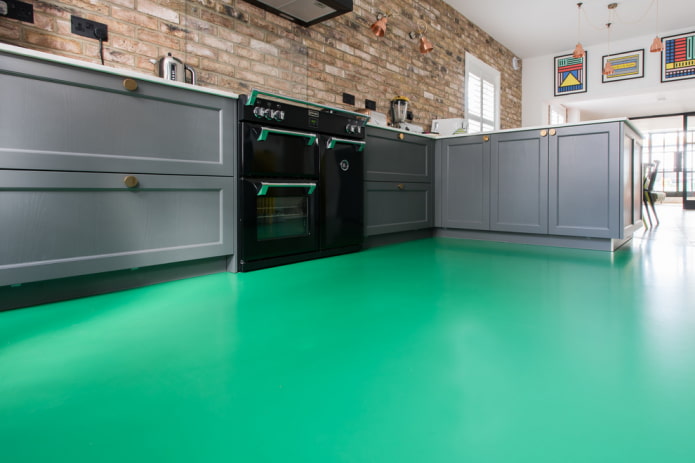
 10 practical tips for arranging a small kitchen in the country
10 practical tips for arranging a small kitchen in the country
 12 simple ideas for a small garden that will make it visually spacious
12 simple ideas for a small garden that will make it visually spacious
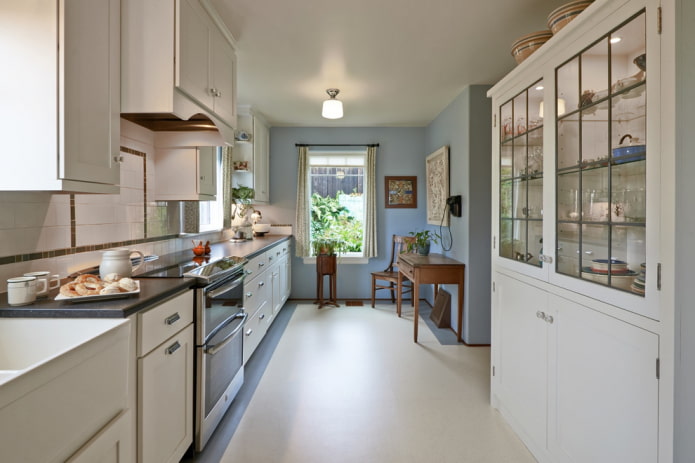
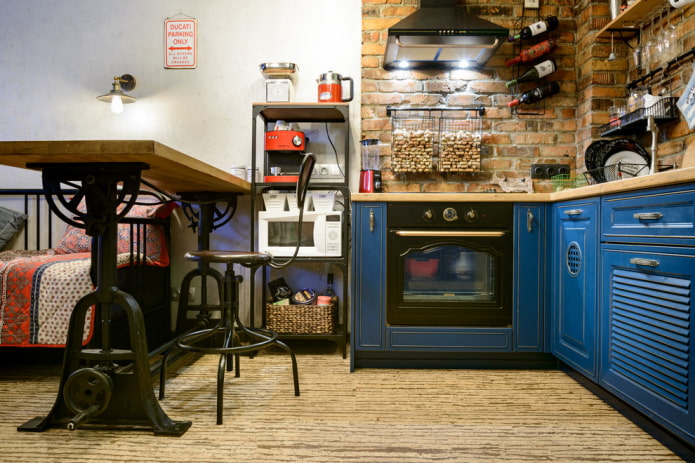
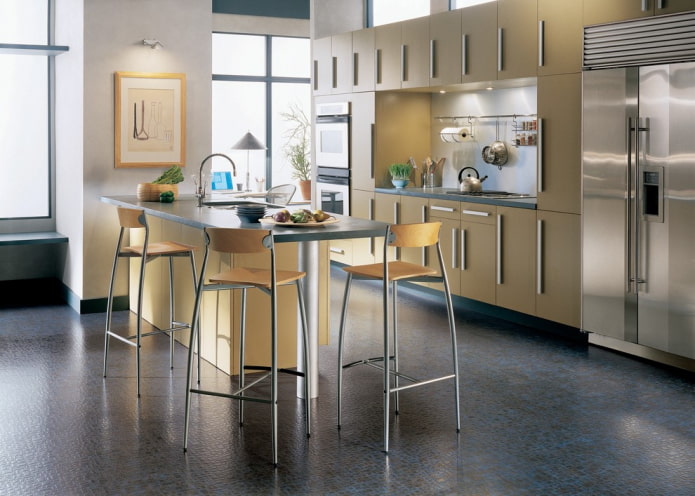
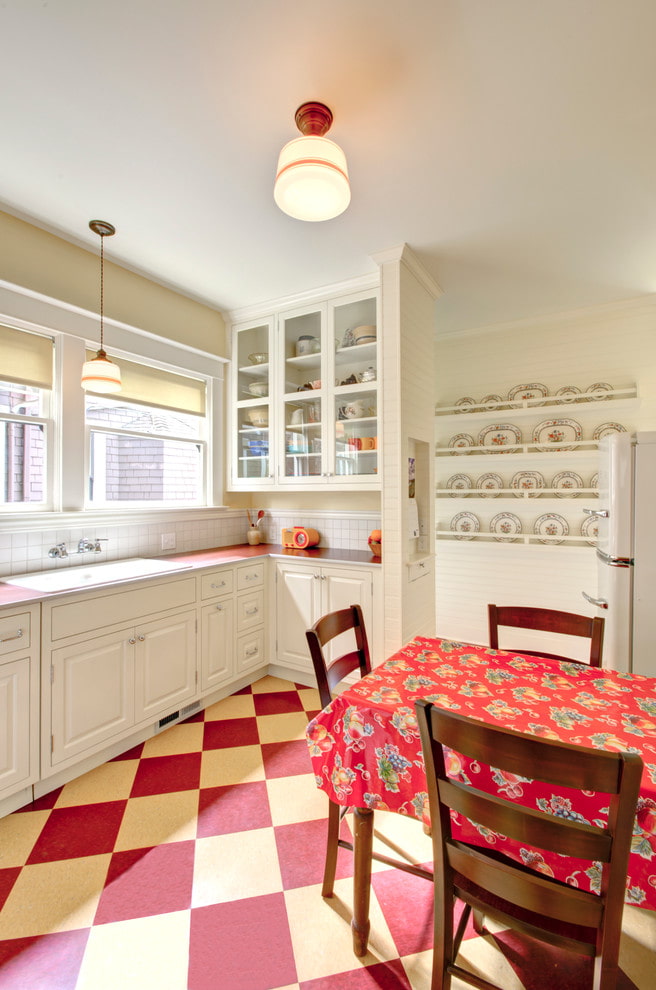
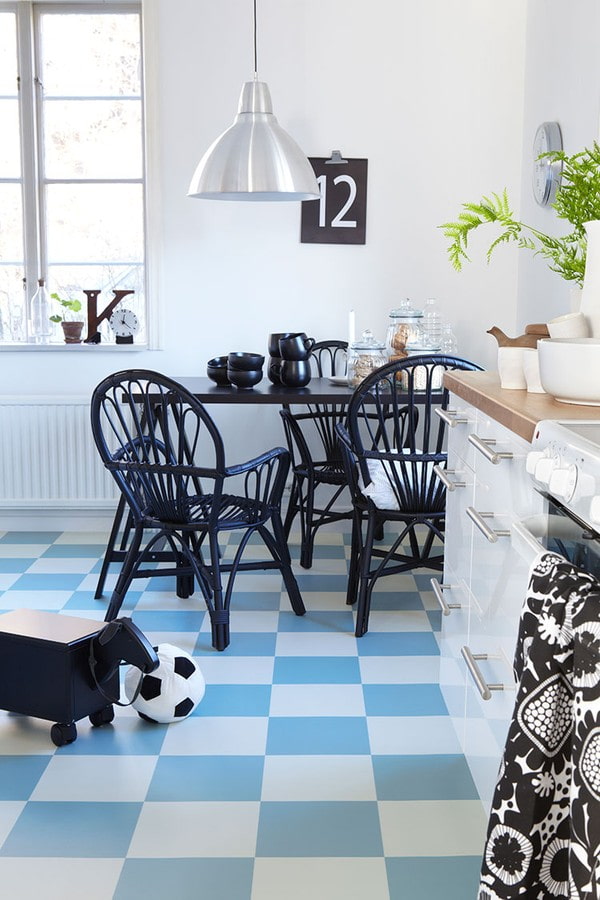
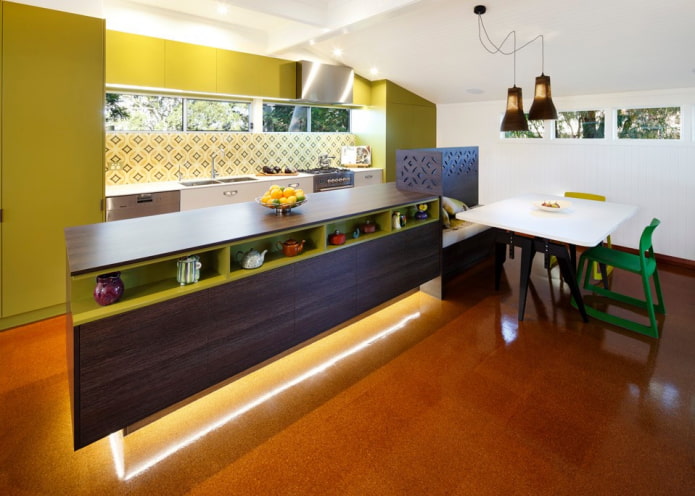

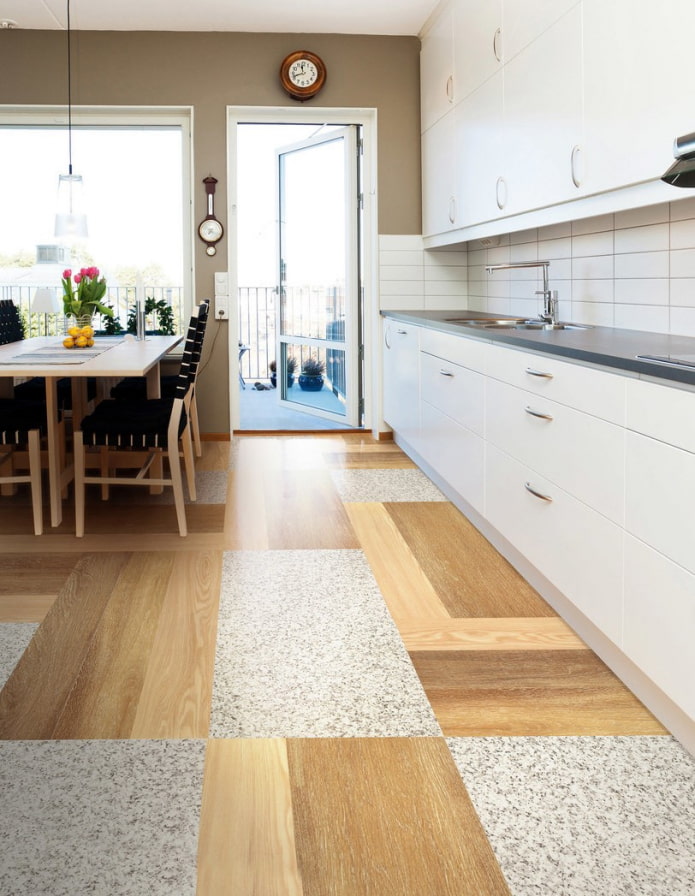
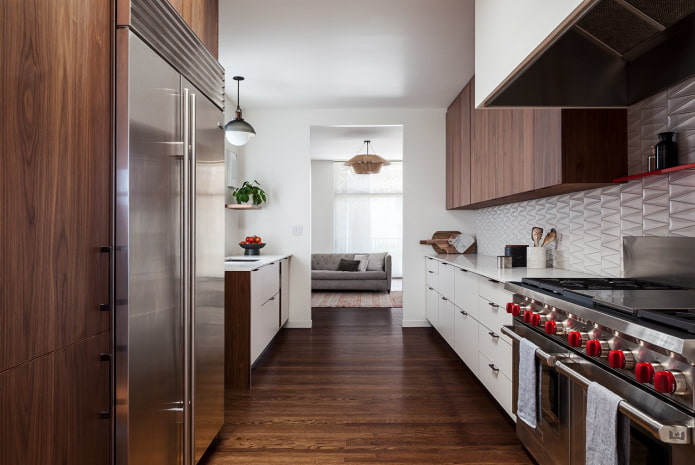
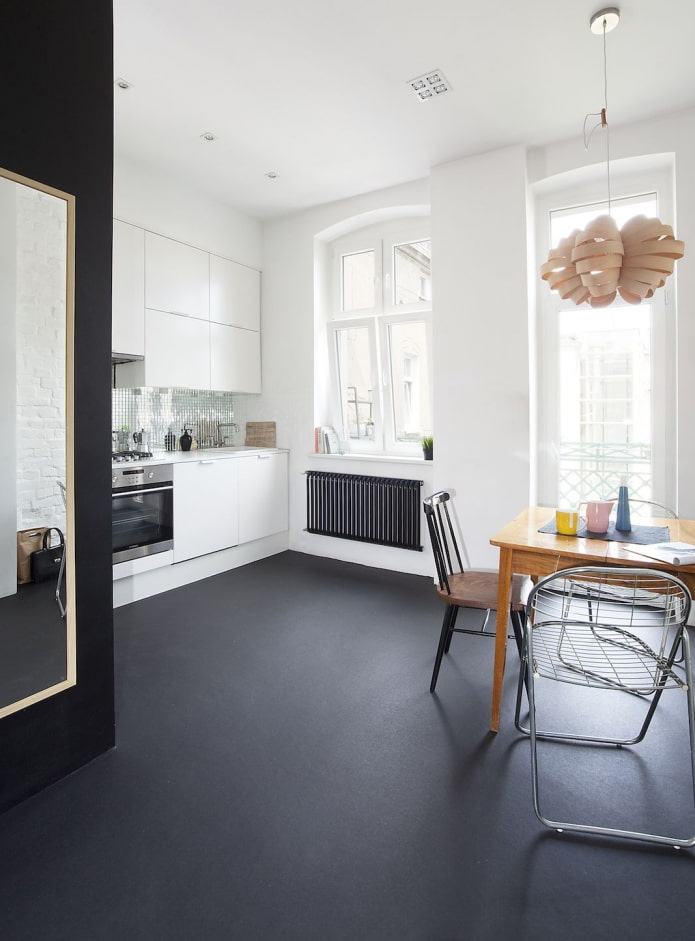
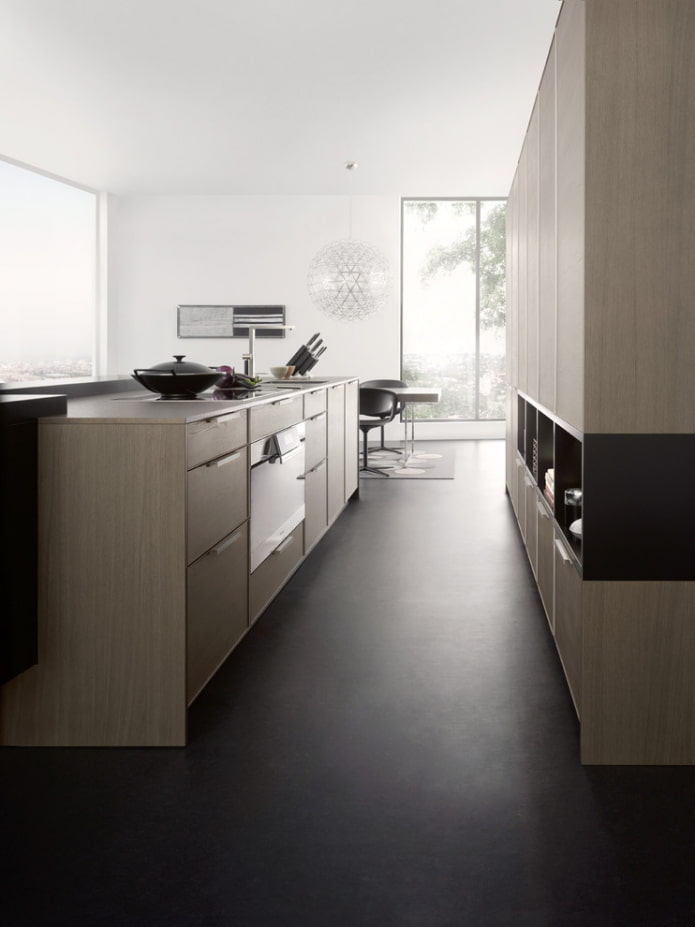

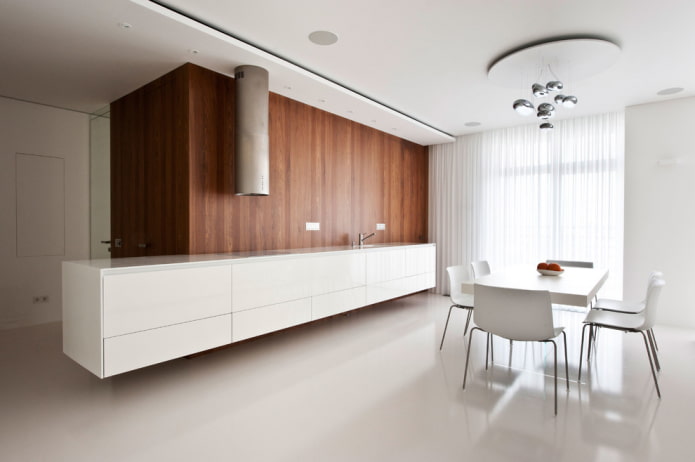

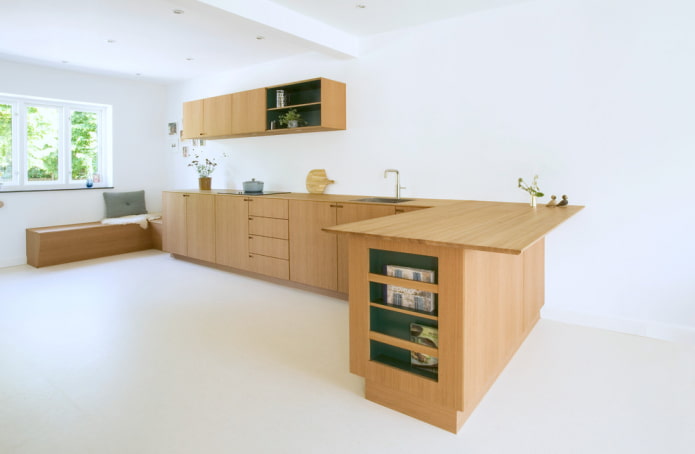
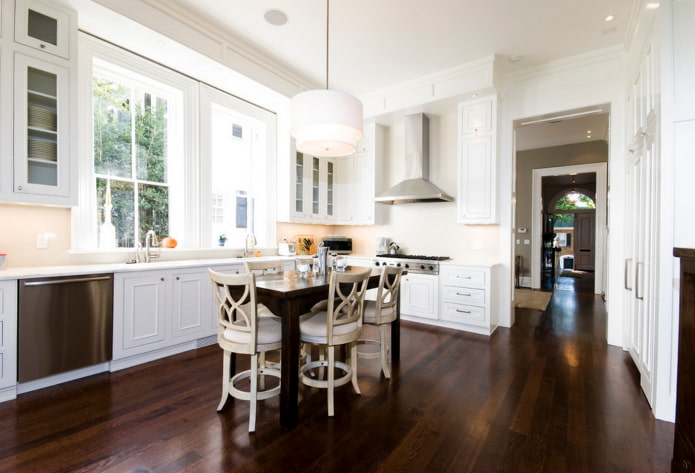
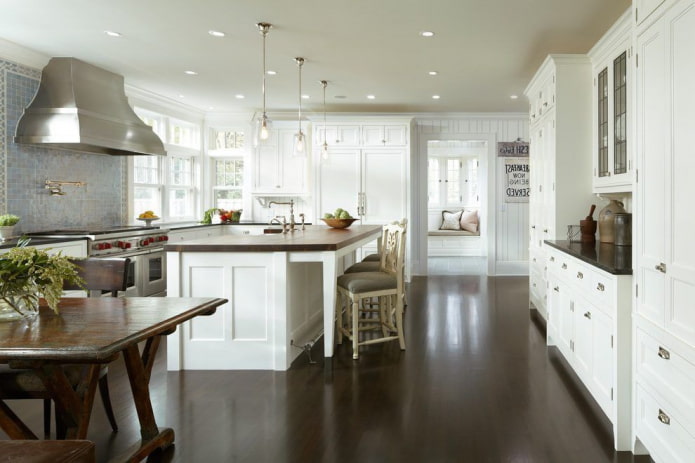
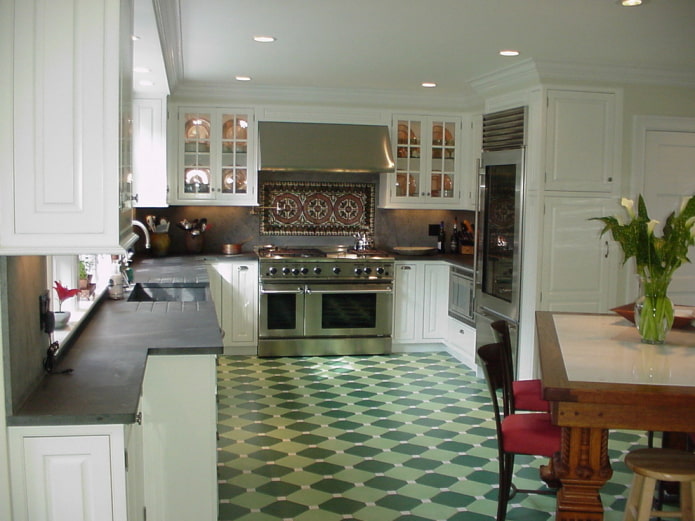


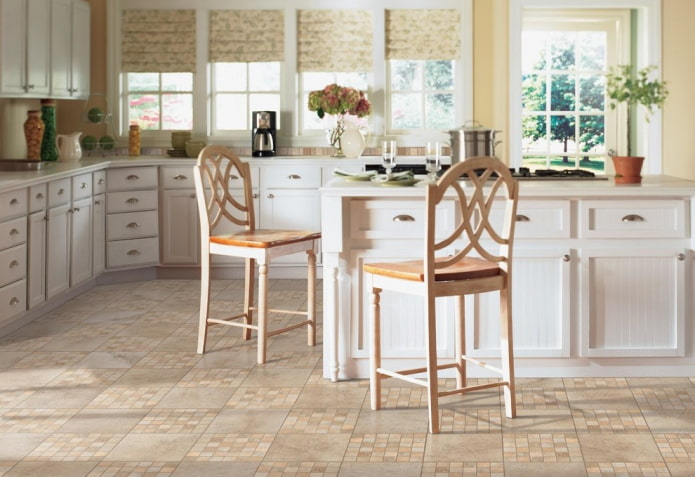
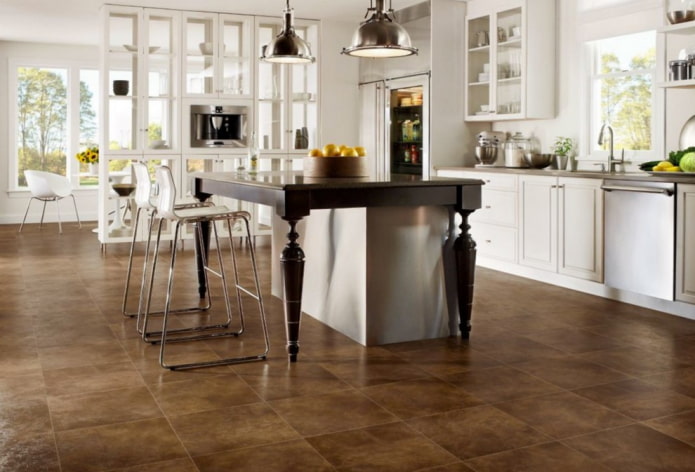
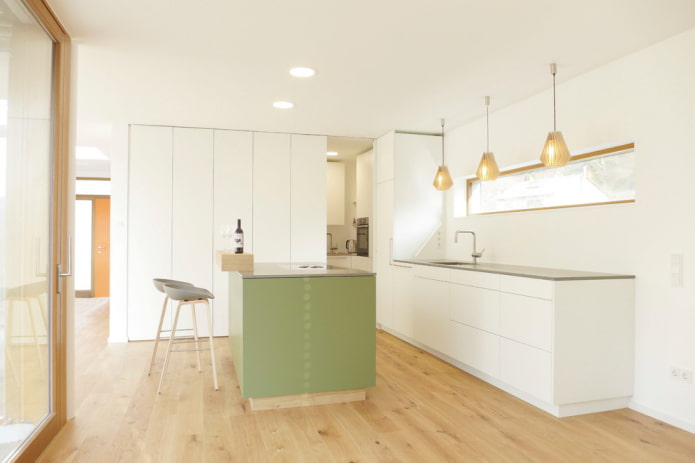
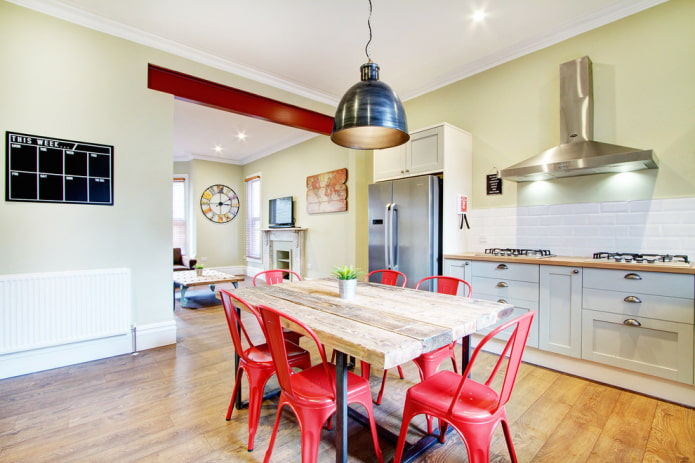

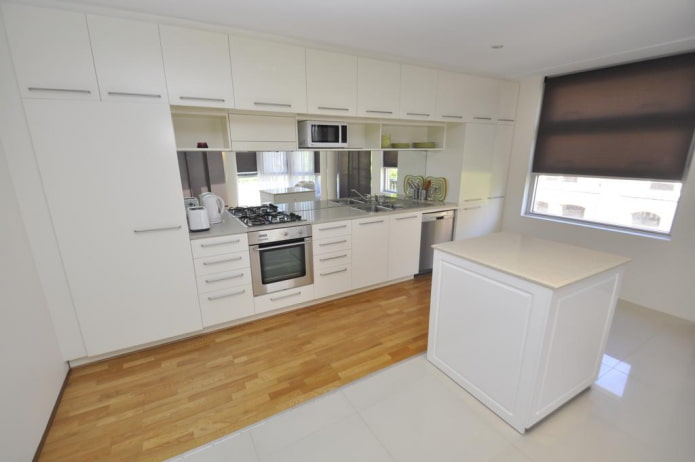
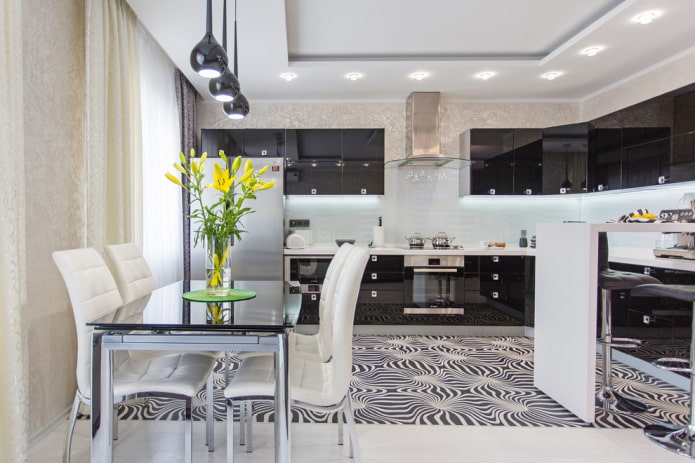
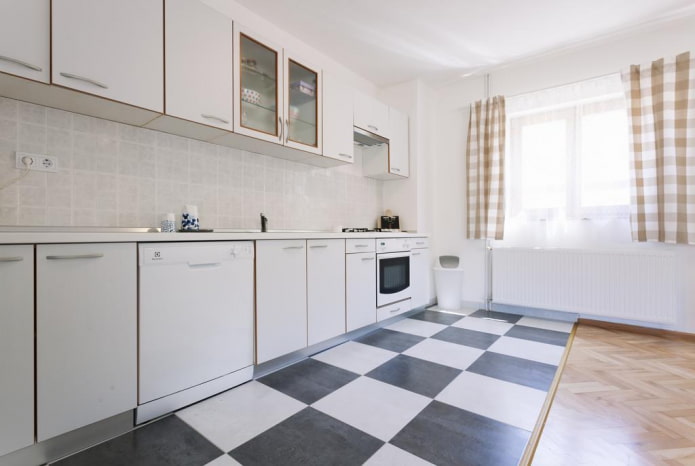
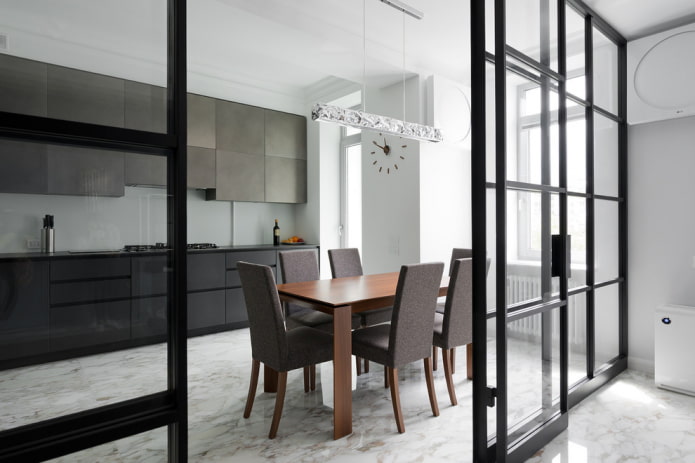
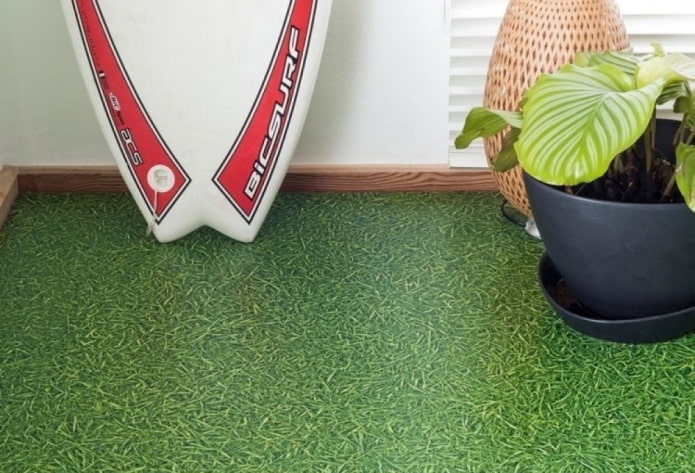
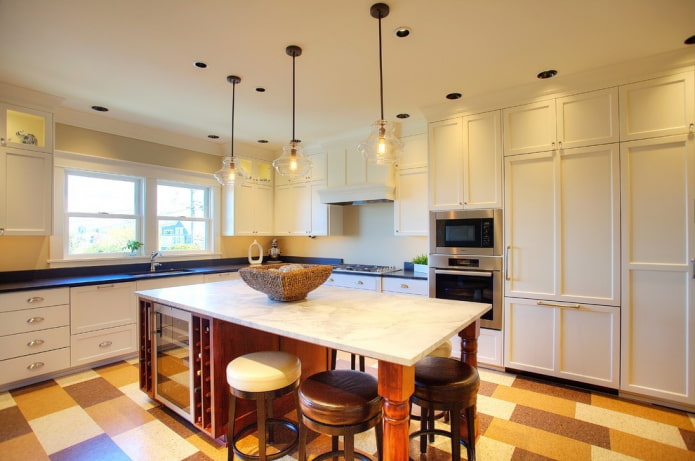
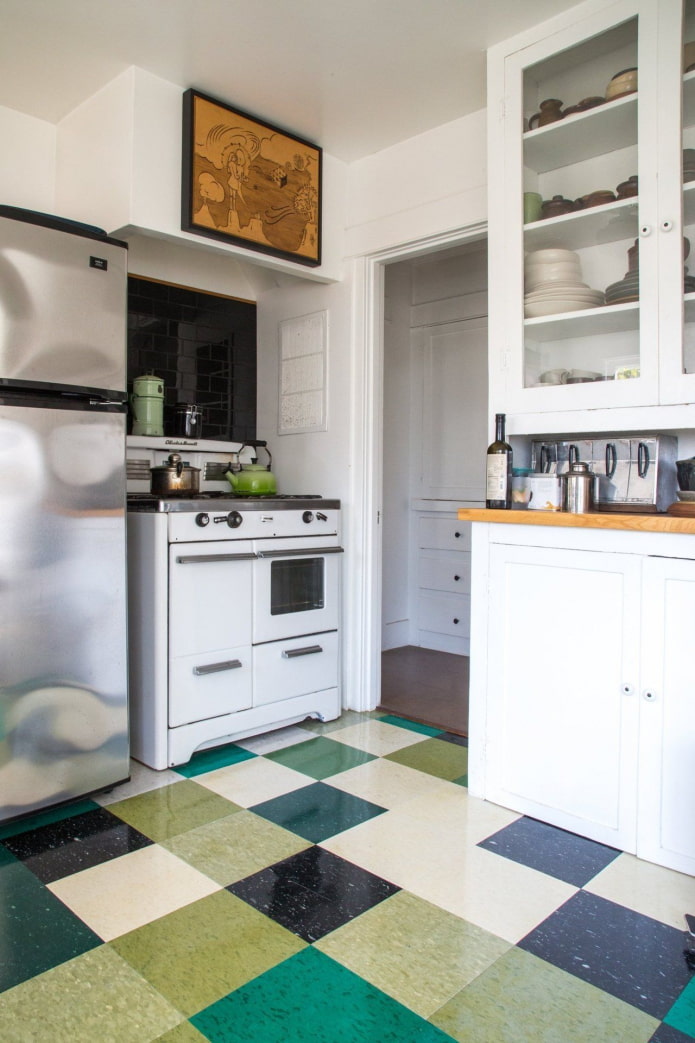



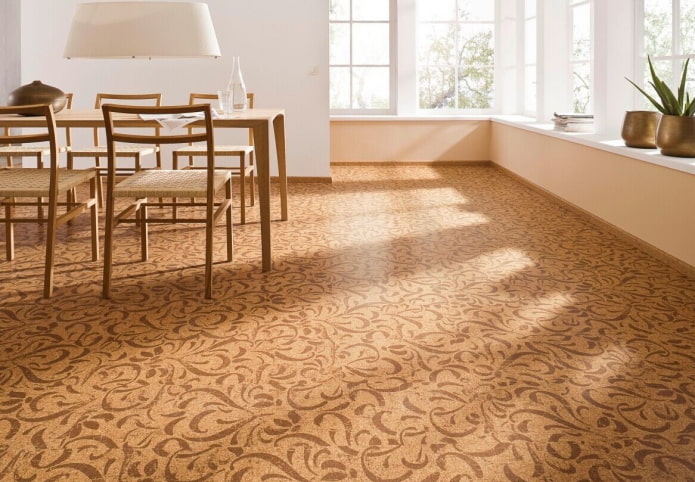
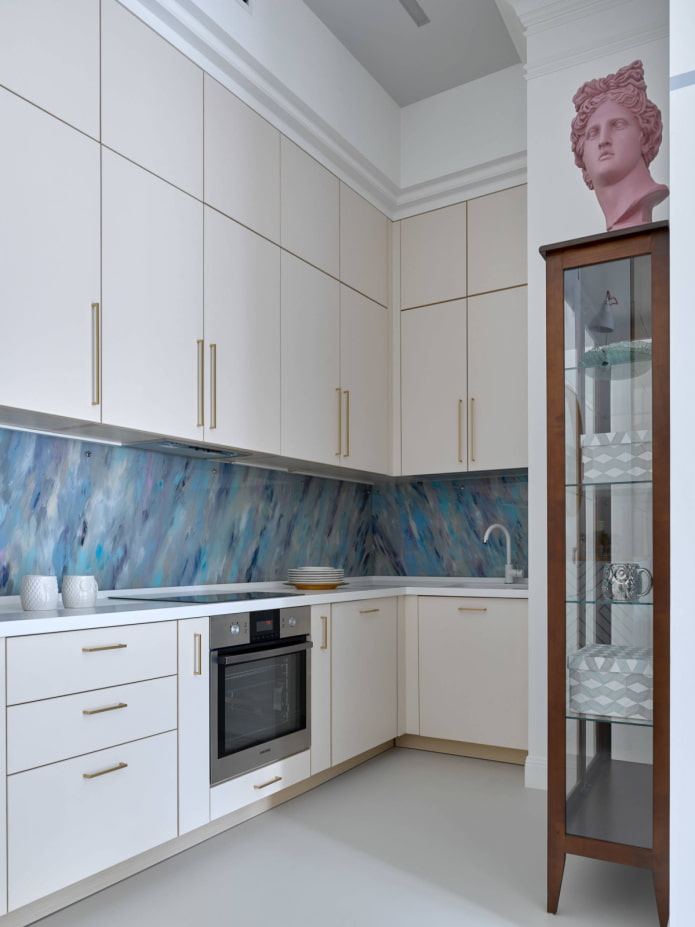
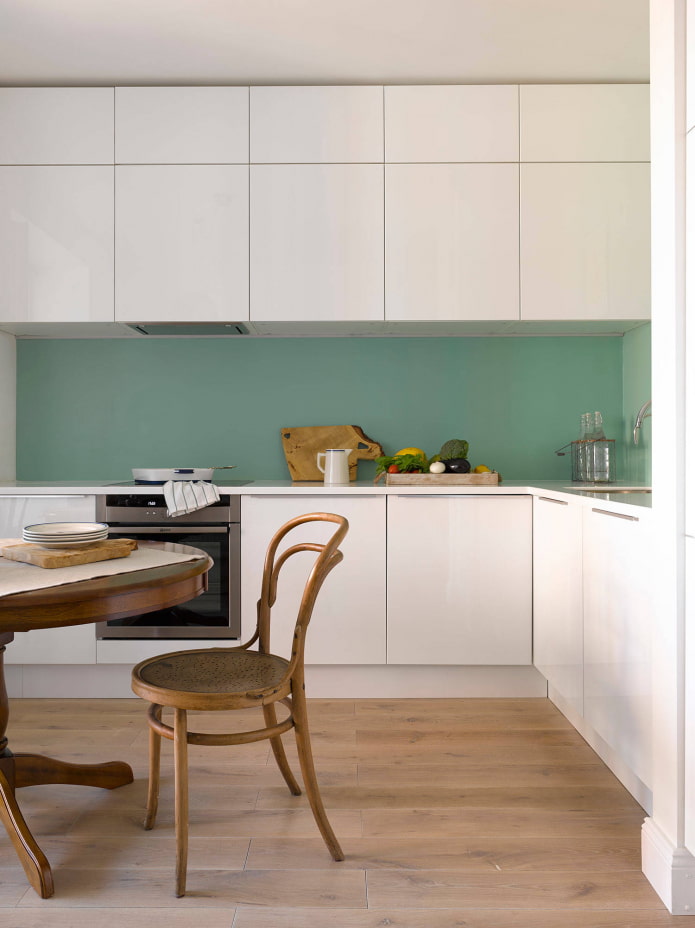
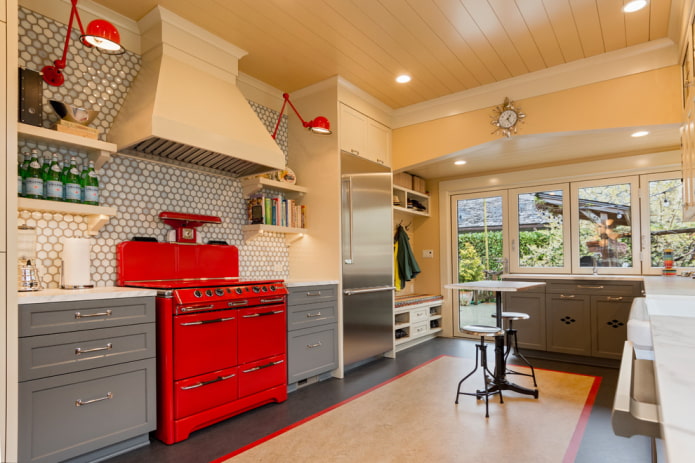
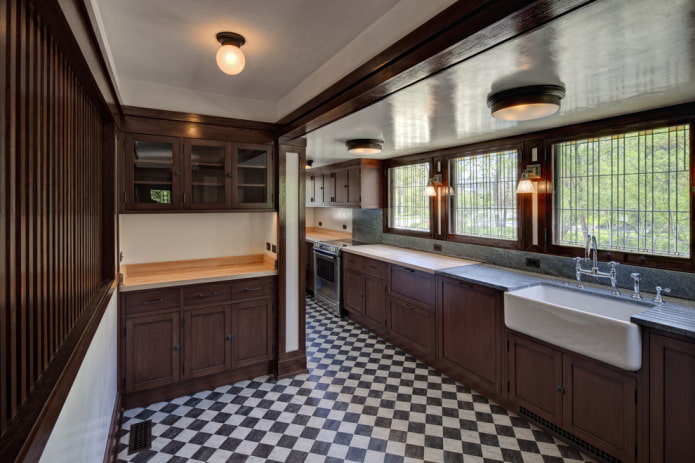

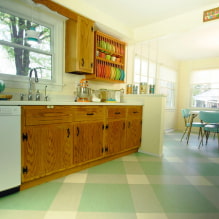

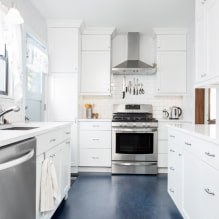
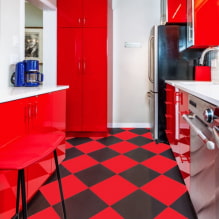
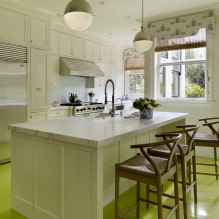
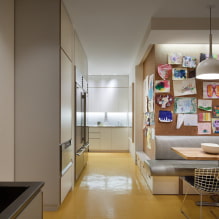

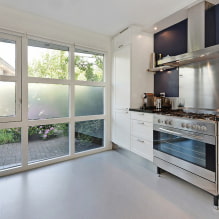
 How to choose the color of your kitchen sink?
How to choose the color of your kitchen sink? White kitchen set: features of choice, combination, 70 photos in the interior
White kitchen set: features of choice, combination, 70 photos in the interior Black set in the interior in the kitchen: design, choice of wallpaper, 90 photos
Black set in the interior in the kitchen: design, choice of wallpaper, 90 photos How to choose curtains for the kitchen and not regret it? - we understand all the nuances
How to choose curtains for the kitchen and not regret it? - we understand all the nuances Design of a white kitchen with a black countertop: 80 best ideas, photos in the interior
Design of a white kitchen with a black countertop: 80 best ideas, photos in the interior Kitchen design with green wallpaper: 55 modern photos in the interior
Kitchen design with green wallpaper: 55 modern photos in the interior